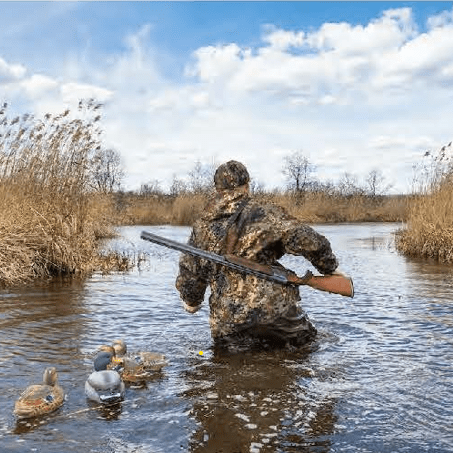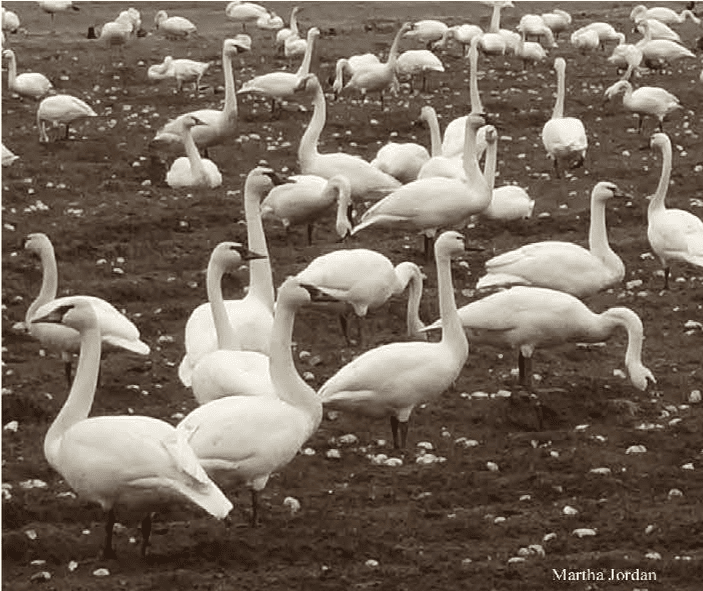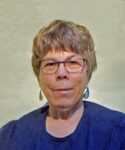Birding with awareness: Creating Connections Between User Groups and Waterfowl Habitats
Birding with Awareness

- Getting to go bird watching and take photographs during the winter waterfowl season is very popular
- The large flocks of snow geese (Anser caerulescens), Trumpeter ( Cygnus buccinator), and Tundra Swans (Cygnus columnianus) arrive on agricultural lands and wetlands and attract tens of thousands of people to see them
- This drives a huge ecotourism industry, especially in Northwest Washington
- Birding with Awareness was created to educate the public about the relationship between the presence of waterfowl and waterfowl-friendly agricultural lands, including dairy farms
Birding with Awareness means how to be more aware of what you are looking at, seeing in context, not just the birds but the landscape and habitat they are using
- Public lands were our focus at the start. We picked Washington Department of Fish and Wildlife's Snoqualmie Wildlife Area, a heavily-used public area near large urban communities
- A program about Shared Spaces was started for bringing attention to the multiple user groups who share our public wildlife lands
Public Wildlife Areas: Shared Spaces
- Birders, hikers, sportsmen/women all share two things in common:
- They all rely on healthy natural lands, and...
- They all must be good stewards of these shared spaces
- We reached out to a wide variety of user groups: watchers, hunters, dog trainers, walkers, and anyone else we encountered in these areas
- Articles and programs creating awareness about issues and other users were done
- Getting people to be aware of the complexity of issues, diversity of users, and wildlife was key





Private Lands and Public Roads

- We took the Shared Spaces concept and expanded it for private farmlands and public roads
- Farms, especially those that grow waterfowl-friendly crops are key to supporting Washinton's vast numbers of waterfowl
- Getting the message out to birders and photographers about the role of farms that grow waterfowl-friendly crops is vital
Dairy Farms: Important for Swans - 85% of our wintering Trumpeter Swans in Western Washington use dairy farms for all or part of the winter
- Provide information for people on where to go and birding/photography etiquette, especially along public roads
- Respect for private lands and other user groups on private land (e.g. hunters, farming activities, and more) while out enjoying the flocks of swans and snow geese, raptors, etc.


Taking Action
- Be safe! For you and for everyone else.
- Encourage people to be aware of their surroundings, where they are safe to park or walk, or how to set up their tripod
- Note if there are other cars around
- Be aware of other activities happening in a public area: hunting (waterfowl, big game, etc.) during certain dates, hunt dog training, or other activities
- If you need a pass to be on public land, put it on your dashboard
- Read what is posted on the reader boards and kiosks. Follow these rules and regulations
- If you are out during hunting season, it is suggested that you wear an orange vest so you can be seen. Non-hunters wear vests to stay safe too
If You See Something, Say Something
When witnessing illegal activities: take photos, never confront. Stay safe.
Dial 911 or call your local wildlife law enforcement or sheriff.
Waterfowl Enthusiasts Need to be Waterfowl Habitat Enthusiasts
The Table that Supports the Spectacle of Waterfowl
All Four Legs are Needed for Balance and Support
Sustainable ecosystem, economically and environmentally
Wildlife - Waterfowl: snow geese and swans, raptors, shorebirds, and other species

Ecotourism - bird watchers and other visitors of all kinds
Hunters - $$ to support farmers, keep crop damage less, and for waterfowl conservation
Conservation - help conserve, protect farmland, waterfowl conservation, wetlands and more
Agriculture - needed are wildlife-friendly crops, dairy farms, and economic viability for farmers

- Farming practices are changing and crops are shifting to non-waterfowl-friendly varieties such as berry and landscaping trees and shrubs
- Dairy farms are leaving Western Washington - market forces, regulations, and environmental rules
- More efficient harvesting machines and methods so less "waste" is left in fields for waterfowl food


Acknowledgements
Thank you to the farmers, user groups, WDFW, Washington State Dairy Federation, Pilchuck Audubon, and Eastside Audubon chapters for being willing to contribute to and help share information and encourage this project to continue.







